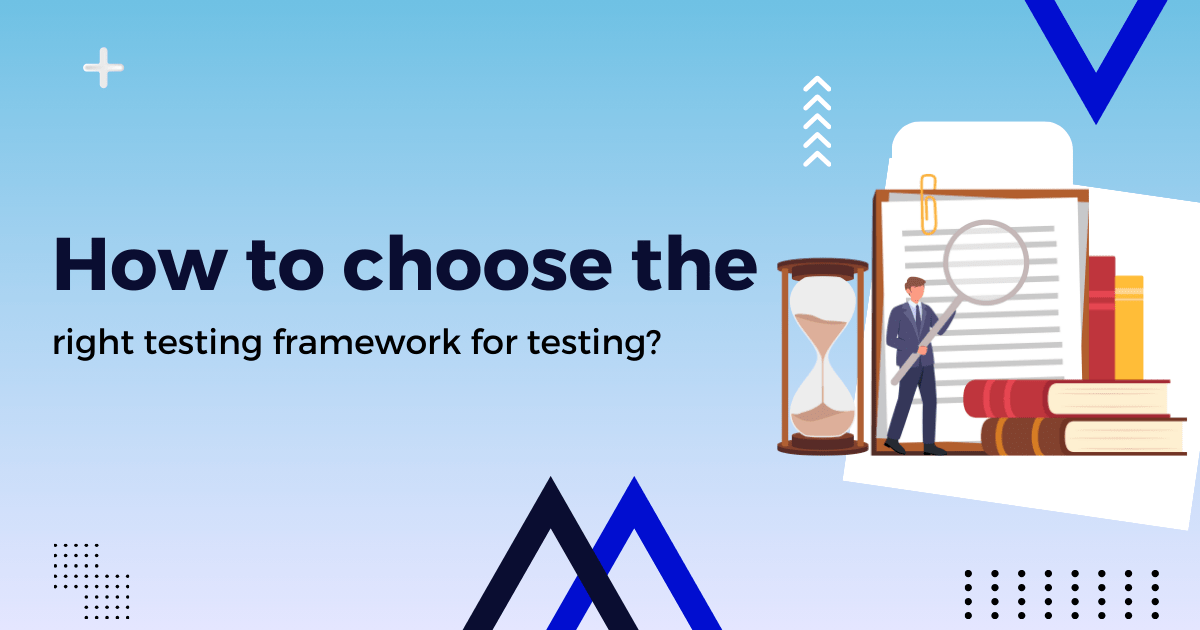In the realm of software development, test automation is a game-changer. Yet, to truly reap its benefits, one must navigate through a sea of options to find the perfect test automation framework or testing framework.
Given the unique nature of each project, including varying requirements, durations, and tool selections, the quest for the ideal framework can seem daunting. However, fear not, as we’ve crafted a step-by-step guide to streamline this process for you to choose the right testing framework for testing.
A Comprehensive Guide to Choosing the Right Testing Framework -2024

Step 1:
Understanding Your Project Requirements At the heart of every successful automation endeavor lies a clear understanding of project expectations. Begin by delineating your specific needs, whether it involves UI testing for a web application, cross-browser compatibility, end-to-end regression coverage, or seamless integration with continuous integration (CI) systems.
Step 2:
Establishing Your Budget Budgetary considerations play a pivotal role in determining the type of test automation tool to pursue. You have the choice between open-source, commercial, or customized solutions. While open-source tools offer cost savings and community support, commercial options provide a rich feature set and dedicated support. Customized solutions offer the flexibility to tailor-fit the framework to your exact requirements.
Ready to enhance your software quality and accelerate your time to market? Contact us today at sales@stelotechnology.com to request a customized quote for your business!
Step 3:
Evaluating the Tech Stack Compatibility with your project’s tech stack is paramount. Ensure that the chosen framework supports the programming languages and operating systems utilized in your project. For mobile app testing, consider platform support as well. Aligning your automation tool with your existing tech stack minimizes integration challenges and maximizes efficiency.
Step 4:
Analysis and Comparison Delve deeper into the features and capabilities of potential automation frameworks. Develop a comparison matrix to evaluate how each tool aligns with your project requirements. Consider factors such as ease of use, scalability, community support, and documentation. Through meticulous analysis, identify the framework that best addresses your needs.
Step 5:
Verification Through Proof of Concept Before committing to a particular framework, conduct a proof of concept (POC) to validate its suitability. Set specific goals for the POC to assess the tool’s functionality, usability, and alignment with project objectives. Based on the outcomes of the POC, determine whether the framework meets your requirements or if further exploration is necessary.
Step 6:
Making the Final Decision Armed with insights from the evaluation process, your team is equipped to make an informed decision. Consider factors such as cost-effectiveness, scalability, and long-term viability. With a comprehensive understanding of the strengths and limitations of each option, finalize your choice and embark on your automation journey with confidence.
In Conclusion Selecting the right test automation framework is a critical decision that can profoundly impact your project’s success. By following these steps and conducting thorough due diligence, you can navigate the complexities of framework selection with ease.
Remember, the key lies in understanding your project needs, evaluating available options, and making a well-informed decision. If you ever find yourself overwhelmed amidst the plethora of choices, our team is here to guide you every step of the way. Happy automating!


